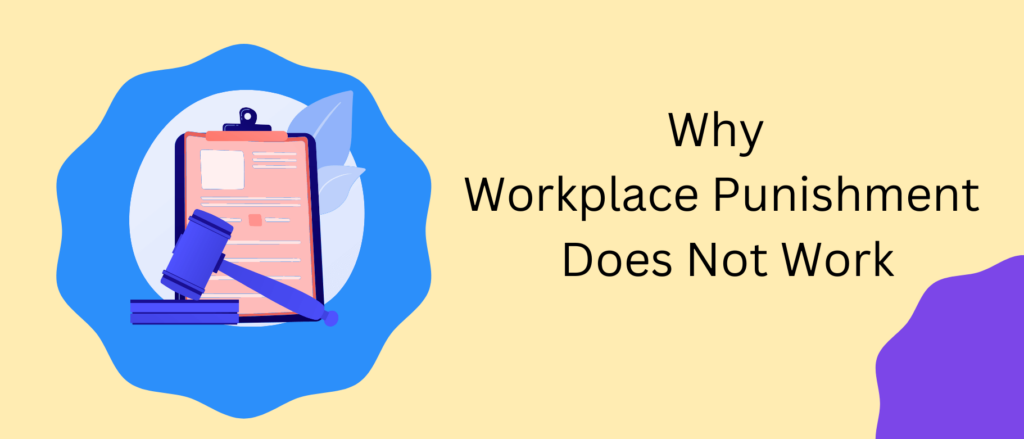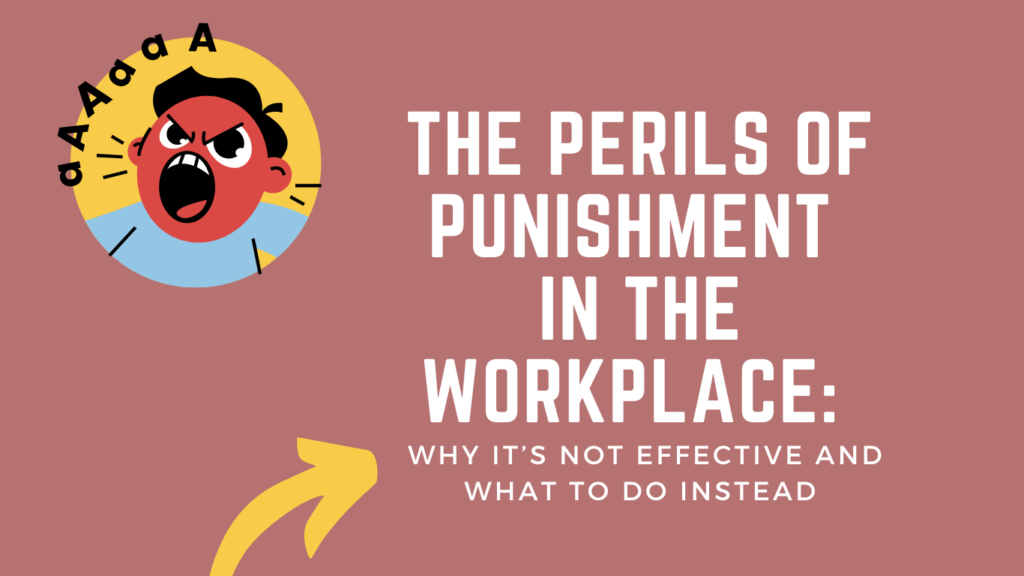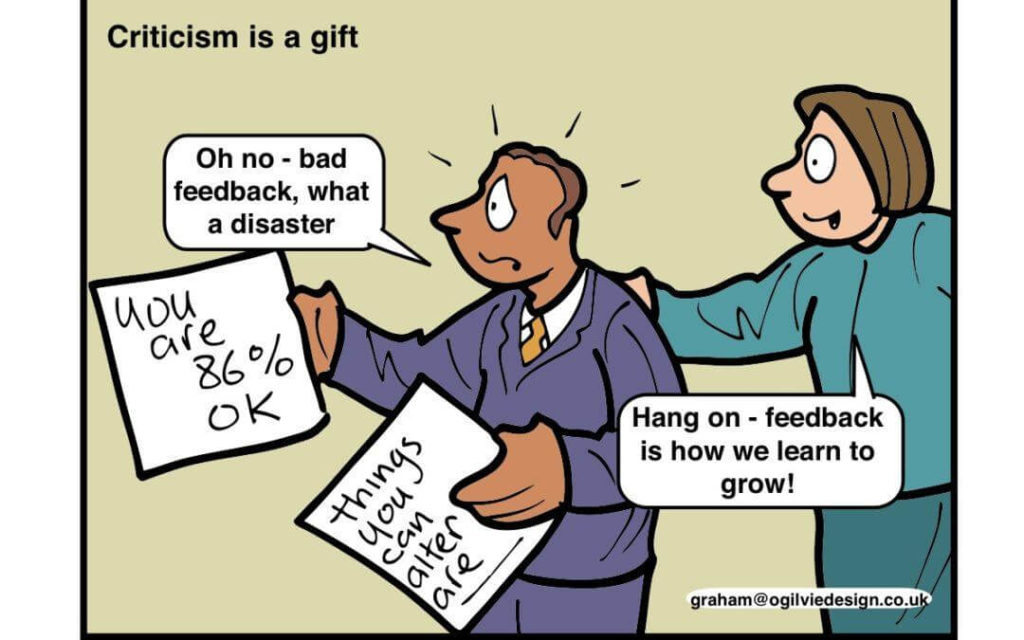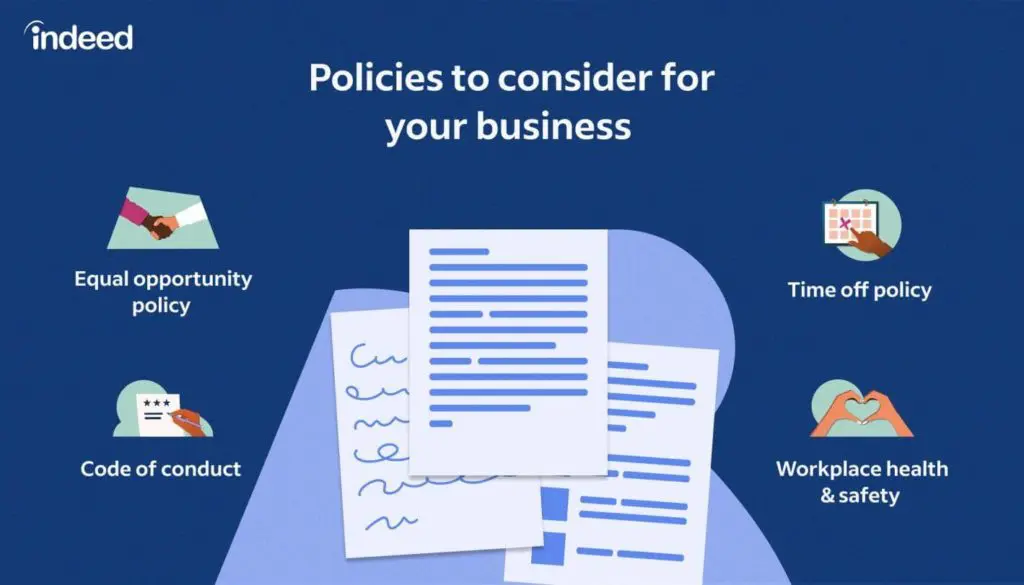The Perils of Punishment in the Workplace: Why It’s Not Effective and What to Do Instead

It’s no secret that workplace punishment is on the decline. A growing number of studies have shown that punishment, in all its various forms, is not an effective way to manage employee behavior. It often has the opposite effect, leading to decreased productivity, lower morale, and even higher staff turnover rates. Of course, you wouldn’t want to face these consequences!
However, how can you effectively manage a disrespectful employee? What should you do instead of exerting punishment? In this blog post, we’ll explore some alternative methods of workplace discipline that are proven to be more effective. Stay tuned!

When it comes to managing employee behavior, punishment is often seen as the go-to solution. After all, if an employee breaks a rule, they should be punished accordingly, right? WRONG! Punishment in the workplace creates undesirable side effects that can far outweigh any benefits.
Punishment is defined as an unwanted consequence that is associated with a behavior that is regarded as bad. In the workplace, this often takes the form of verbal or written warnings, demotions, pay cuts, suspensions, and even termination

However, what’s considered bad or right? Unfortunately, sometimes this is often a matter of opinion. What one person sees as a minor infraction may be seen as a major issue by someone else. This can lead to inconsistency in how punishment is handed out, which can be frustrating for employees.
Employees who feel like they’re being punished are less likely to be engaged in their work, which can lead to lower morale and higher staff turnover rates
Punishment also doesn’t address the root cause of the problem behavior. For example, if an employee is constantly late for work, punishment in the form of a pay cut may temporarily reduce tardiness. However, it doesn’t solve the underlying issue of why the employee is late in the first place.
- Is there a problem with their alarm clock?
- Are they having trouble getting childcare?
- Are they experiencing an issue with their mental health?
Without addressing the root cause, the problem is likely to persist – or even get worse. Yes, basic motivational techniques usually involve some form of reward for good behavior or punishment for bad behavior. However, many companies have discovered that rewards are more effective in terms of reinforcing positive actions and motivating employees to repeat them.
This goes along with Skinner’s operant learning theory from 1938 asserts that when positive reinforcement is given after the desired behavior, that same behavior becomes more likely to be repeated in the future. Therefore, companies are cultivating discipline instead of punishment, concepts that sometimes are confused as the same thing
Get more out of your business
Get the best employee engagement content every week via mailing list
Punishment Vs. Discipline
The main difference between punishment and discipline is that punishment is a consequence that is intended to be negative, while discipline is a consequence that is intended to be positive.
Punishment is often seen as a “quick fix” solution to problem behavior, but it doesn’t address the root cause of the issue. It also has several negative side effects, such as decreased productivity, lower morale, and higher staff turnover rates.
On the other hand, discipline is a more holistic approach that focuses on reinforcing positive behavior and teaching employees how to avoid negative behavior. It’s also been shown to be more effective in the long run, leading to increased productivity, engagement, and retention.
Workplace discipline should be about improving employee behavior, not punishing it
So, what you desire is to discipline your employees into a good and productive routine. What’s the best way, though? Let’s take a look at some proven methods that you can use in your workplace!
How to Discipline Your Employees?
Below, we have compiled a set of tips to discipline your employees, this way you can avoid punishment altogether!
Constructive Criticism
Sometimes, employees need help getting back on track. This is where constructive criticism comes in. Constructive criticism is a way to give feedback that is intended to be helpful, not hurtful. It’s important to avoid using negative language or making personal attacks. Instead, focus on the behavior itself and what could be done differently.

Here are some tips for giving constructive criticism:
- Be specific – When you’re critiquing an employee’s behavior, it’s important to be as specific as possible. This will help them understand what they need to change and how they can improve.
- Use “I” statements – Rather than saying “you always do this,” try using “I” statements. For example, “I noticed that you didn’t take the time to proofread your report. Next time, I’d appreciate it if you could take a few extra minutes to make sure it’s error-free.
- Offer solutions – In addition to pointing out the problem, try to offer some possible solutions. For example, if for X reason that employee couldn’t proofread the report, alternatively, you could offer them help from a coworker.
- Avoid generalizations – Avoid making sweeping statements like “you’re always late” or “you never do your job right.” These types of generalizations are not only inaccurate, but they’ll also only make the employee feel defensive.
- Be calm and respectful – It’s important to remain calm and respectful when giving criticism. Getting angry or raising voices will only make the situation worse.
- Follow up – After you’ve given criticism, be sure to follow up with the employee to see if they’ve made any improvements. If not, you may need to have a further discussion.
Praise in Public, Criticize in Private
When an employee does something well, it’s important to let them know. Praising employees in public is a great way to show your appreciation and give them the recognition they deserve. This will not only boost their morale but also motivate them to continue doing their best. Oftentimes, employees make mistakes.

When this happens, it’s important to avoid critiquing them in front of their peers. This will only embarrass and humiliate them, which will do more harm than good. Instead, take them aside and discuss the issue in private. This way, you can have a calm and constructive conversation without making a scene.
Establish Clear Company Policies
Any company needs to have clear policies in place to discipline employees. These policies should outline expectations and consequences for violating those expectations, as well as a clear process for handling disciplinary situations.
This transparency sets clear boundaries for employees and ensures that any disciplinary actions taken are consistent and fair. Clear company policies also provide legal protection for the company, demonstrating that all disciplinary steps were properly communicated and followed.
Clear rules and policies guarantee everyone is on the same page, even you as the boss!
Overall, establishing clear company policies regarding employee discipline can have numerous benefits for the workplace environment and the overall functioning of the organization.

Ongoing Training
Ongoing training is important for disciplining employees, as it not only helps to improve their job performance and work ethic but also reinforces company policies and procedures. Employees who regularly attend training sessions stay up-to-date with current industry developments and best practices, making them more confident and competent in their roles.
Constant training serves as a reminder of key expectations and guidelines within the workplace, helping to prevent disciplinary issues from arising in the first place
If a problem does occur, ongoing training provides a strong foundation for managers to address the situation effectively and consistently. Investing in ongoing training is a valuable investment in both individual employee growth and overall company success.
Ongoing Feedback
Giving feedback is not a one-time event. It should be an ongoing process that happens regularly. This way, employees always know where they stand and what they need to work on. Feedback should be given at the moment, not long after the fact.
If you wait too long, the employee may not even remember what they did. On the other hand, if you give feedback too often, it will start to feel like nagging. Try to strike a balance and give feedback as needed.
Focusing on the Positive
It’s important to focus on the positive when disciplining your employees. This means catching them doing things right and praising them for it. When you focus on the positive, you’re more likely to see improvements in their behavior.
Here are some tips for focusing on the positive:
- Catch them doing something good: Instead of waiting for them to make a mistake, try to catch them doing something right. This could be anything from completing their tasks on time to being polite to customers.
- Praise their effort: Even if an employee doesn’t quite meet your expectations, praise their effort. This will show them that you appreciate their hard work and effort. Try saying, “I know you didn’t quite hit your target this month, but I appreciate the extra effort you put in. Keep up the good work!”
- Focus on their future: When an employee makes a mistake, don’t dwell on it. Instead, focus on their future and what they can do to improve example, you could say, “I know you’re disappointed that you didn’t get the project done on time. What can we do to make sure that doesn’t happen again in the future?”
This way, you’re helping them learn from their mistake and preventing them from happening again in the future. The idea is to meet in the middle!
Forget about a Punishment System, Implement a Reward System Instead
The advantages of a reward system over a punishment system are clear. First, rewards are more likely to lead to the desired behavior change. They also don’t have the same negative side effects as punishment. Rewards can even improve employee morale and motivation.

Here are some tips for implementing a reward system:
- Be clear about the desired behavior – The first step is to be clear about what you’re trying to achieve. What specific behaviors do you want to see more of?
- Come up with a list of possible rewards – Once you know what you’re trying to achieve, you can start brainstorming possible rewards. These could be anything from a bonus to a day off.
- Make sure the rewards are meaningful – The rewards you choose should be meaningful to your employees. They should also be something that they would want to achieve.

Use Positive Reinforcement
One of the most effective ways to manage employee behavior is through positive reinforcement. Positive reinforcement is a type of workplace discipline that rewards desired behavior to encourage employees to repeat that behavior in the future.
For example, if an employee meets or exceeds your expectations, you may choose to give them a bonus, gift card, or even just a verbal pat on the back. On the other hand, if an employee fails to meet your expectations, you can withhold the reward.
Give a Warning When Needed
If the steps above didn’t work, it’s time for a stronger move. Don’t hesitate to give a verbal warning! Make sure you’re clear about what the problem is and what the consequences will be if the behavior doesn’t change.
For example, you could say, “I’ve noticed that you’ve been coming in late a lot lately. If this continues, you may face disciplinary action.”
This should be a last resort; however, you must take action when an employee is not meeting your expectations. If you don’t, they may think that their behavior is acceptable and continue to do it.
Take Action When Necessary
If the employee doesn’t improve after a warning, it’s time to take action. This could be anything from a formal written warning to suspension or even termination.
Of course, this should only be done as a last resort and after you’ve exhausted all other options. But if an employee continues to exhibit problematic behavior, you must take action.
While disciplinary actions may not be pleasant, it is important to consider the impact on the rest of the team and the company as a whole
A lack of discipline can create resentment and lower morale in the workplace. It can also lead to inefficiencies and missed deadlines. As an employer, it is your responsibility to address issues with employees promptly and fairly to create a positive work environment for everyone involved.
Lead by Example
A key way to encourage desired employee behavior is to lead by example. If you want your employees to be punctual, for instance, make sure you’re always on time yourself. If you want them to dress a certain way, make sure you’re following the dress code yourself.
By leading by example, you’re setting the standard for everyone else, It’s important to be proactive about managing employee behavior, and this starts with yourself!
Takeaway
In this era, punishment is no longer seen as the healthiest way to manage behavior, instead, we encourage you to use positive reinforcement, this way you will shape your employee’s behavior more efficiently.
Not to mention that it will also decrease their stress levels and make them happier, which will lead to a better work environment for everyone.
We hope these tips were helpful! If you have any questions or would like to learn more, please don’t hesitate to check our other blog posts on the subject!
-The Monitask Team


